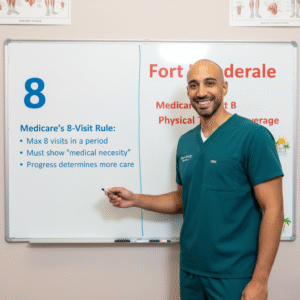If you’ve ever injured your knee, had back pain, or recovered from surgery, you’ve probably heard both terms: physiotherapy and physical therapy. Many people wonder: Are they the same thing? Or do they mean different types of treatment?
In this blog, we’ll break down what each term means, where the difference comes from, and why, for most people, they’re often the same.
The Short Answer: Yes, Mostly!
In most English‑speaking countries, physiotherapy and physical therapy refer to the same practice: helping people restore movement, strength, and function after injury, surgery, or chronic illness.
The difference? It’s mainly about terminology and regional preference:
- “Physical therapy” is used mostly in the United States.
- “Physiotherapy” is the standard term in the UK, Canada, Australia, and many other countries.
The professionals delivering this care are called physical therapists in the US and physiotherapists elsewhere, but they do similar work.
Why the Two Names Exist
Both words come from the same roots:
- “Therapy” means treatment.
- “Physio” and “physical” both refer to the body.
The term physiotherapy originated earlier (from Greek “physis,” meaning nature), while physical therapy became popular in America around World War I when the field grew rapidly to help injured soldiers.
Despite different names, the science, techniques, and professional standards are largely the same.
What Do Physiotherapists / Physical Therapists Do?
Regardless of what they’re called, their goal is the same: to help patients move better and reduce pain. This may include:
Designing exercise and rehabilitation programs
Manual therapy, such as joint mobilization and soft‑tissue massage
Education on posture, movement, and injury prevention
Modalities like heat, cold, ultrasound, and electrical stimulation
They treat a range of conditions:
- Sports injuries
- Post‑surgical recovery
- Chronic pain and arthritis
- Neurological conditions (e.g., stroke, Parkinson’s disease)
Are There Any Real Differences in Practice?
In some regions, small differences exist:
- In countries that use “physiotherapy,” treatment may include more manual therapy and holistic approaches.
- In the US, “physical therapy” sometimes emphasizes exercise‑based rehabilitation and uses more high‑tech modalities.
However, these differences are often based on clinic philosophy or individual practitioner style rather than the title itself.
Education and Licensing
Whether you see a physiotherapist or a physical therapist, both typically:
Complete a university degree (often Master’s or Doctorate)
Pass licensing exams to practice legally
Undertake ongoing professional development
These shared standards ensure patients receive evidence‑based, safe, and effective care worldwide.
Specializations
Both fields also have specializations, such as:
- Sports rehabilitation
- Neurological physiotherapy/neuro PT
- Pediatric therapy
- Geriatric therapy
- Women’s health and pelvic floor therapy
No matter what it’s called, these specializations follow similar evidence‑based guidelines.
So Which Term Should You Use?
If you’re in the United States, “physical therapy” or “PT” is most common.
If you’re in the UK, Canada, Australia, or elsewhere, “physiotherapy” is the everyday term.
They mean the same professional care: helping you recover, move freely, and live with less pain.
Important Tip: Choosing the Right Professional
The name matters less than the therapist’s qualifications, experience, and patient‑centered approach. When choosing a physiotherapist or physical therapist:
Check they’re licensed and accredited in your country.
Look at their experience with your specific condition.
Ask about treatment philosophy and typical plans.
Read patient reviews and testimonials.
Final Thoughts
Physiotherapy and physical therapy are two names for a shared mission: restoring movement and quality of life. While regional language differs, the science and care behind these treatments remain the same.
So, whether your local clinic sign says physiotherapy or physical therapy, you can expect skilled, professional support on your road to recovery. Contact us today! We care for you more than you think.








